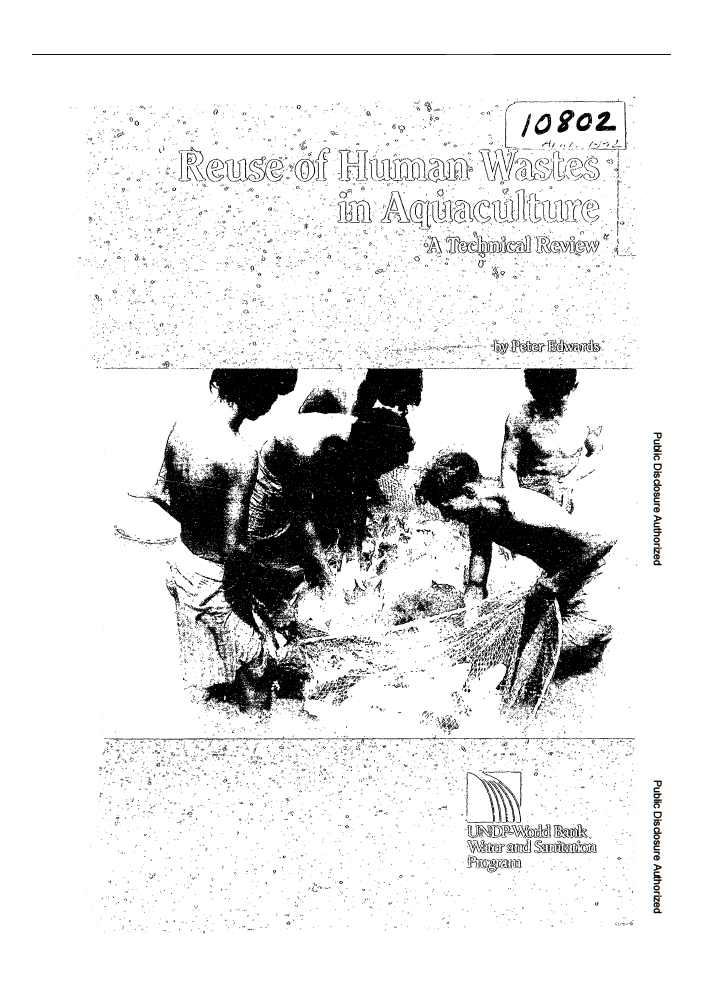
Published in: 1992
Pages: 360
Publisher:
UNDP-World Bank Water and Sanitation Program.
Author:
Edwards, P.
Uploaded by:
SuSanA Admin
Partner profile:
common upload
1673 Views
32 Downloads
New national goals in wastewater treatment in the United States of America place strong emphasis on the use of natural systems and improved biological processes. These goals encourage sewage reuse through agriculture, forestry, and aquaculture (Duffer 1982). However, the cultivation of fish in wastewater has been of interest in the United States for only a short time: from a practical point of view, it remains largely conceptual (Henderson 1982) and experimental (Ryther 1980). A major reason for recent interest in aquaculture in treating wastewater in the United States is its potential to reduce the energy requirements and the operation and maintenance costs of wastewater treatment (Reed et al. 1979). Aquaculture systems -- activated sludge and trickling filters, and tertiary treatment of effluents from secondary treatment systems using stabilization ponds -- might be cheaper, simpler alternativest to conventional secondary treatment( Hendersona nd Wert 1976, Duffer and Moyer 1978, Golueke 1979, Henderson 1982). Waste stabilization pond systems are receiving special attention because, unlike conventional sewage treatment involving activated sludge and trickling filters, they have the potential for nutrient reuse (Mara and Pearson 1986). The utilization of natural waste treatment systems such as aquaculture should reduce energy costs, and the reuse of nutrients in the production of biomass as a feedstuff should produce an economic revenue to offset part of the operating costs.
Bibliographic information
Edwards, P. (1992). Reuse of Human Wastes in Aquaculture - A technical review. UNDP-World Bank Water and Sanitation Program.
Filter tags
English Faeces or faecal sludge














